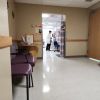- 1-Distinguishing-Heart-Disease-and-Cardiac-Arrest
- 2-Common-Symptoms-of-Heart-Disease
- 3-Recognizing-Cardiac-Arrest-Symptoms
- 4-Case-Study-Real-Life-Experience
- 5-Importance-of-Early-Detection-and-Response
- 6-Preventive-Measures-and-Ongoing-Care-for-Heart-Health
1. Distinguishing Heart Disease and Cardiac Arrest
Heart disease and cardiac arrest are closely related but represent different medical emergencies. Heart disease refers to a variety of conditions affecting the heart’s structure and function, including coronary artery disease, arrhythmias, and heart valve problems. It often develops gradually, manifesting through symptoms such as chest pain or fatigue.
Cardiac arrest, however, is an abrupt loss of heart function, often caused by a severe arrhythmia that disrupts the heart’s ability to pump blood effectively. Unlike a heart attack, which is a blockage causing heart muscle damage, cardiac arrest leads to sudden unconsciousness and requires immediate medical intervention to prevent death.
Understanding these distinctions is critical for recognizing symptoms and taking timely action. HeartCare Hub provides comprehensive information and resources to help individuals navigate these complex conditions.

2. Common Symptoms of Heart Disease
Heart disease symptoms can vary widely depending on the specific condition, but some signs commonly signal the need for medical evaluation:
Cardiac Solutions
cardiac solutions
5651 W Talavi Blvd, Glendale, AZ 85306, USA

2.1 Chest Discomfort and Pain
Often described as pressure, tightness, or squeezing, chest pain can radiate to the arms, neck, jaw, or back.
2.2 Shortness of Breath
Difficulty breathing during exertion or rest may indicate heart failure or ischemia.
2.3 Fatigue and Weakness
Reduced cardiac output can cause persistent tiredness and decreased exercise tolerance.
2.4 Irregular Heartbeat
Palpitations or arrhythmias may be felt as fluttering or racing heartbeats.
These symptoms often develop gradually, allowing time for diagnosis and management, but ignoring them can lead to severe consequences.
3. Recognizing Cardiac Arrest Symptoms
Cardiac arrest symptoms are sudden and severe. Recognizing them early can save lives:
3.1 Sudden Collapse and Loss of Consciousness
The hallmark of cardiac arrest is an unexpected fainting or collapse with no response.
3.2 Absence of Pulse and Breathing
The person stops breathing or gasps irregularly, and there is no detectable heartbeat.
3.3 Loss of Muscle Tone
The body becomes limp, and the individual cannot respond or move.
Immediate action, including calling emergency services and starting CPR, is essential to increase survival chances.
4. Case Study: Real-Life Experience
Consider the story of John, a 58-year-old man who experienced subtle heart disease symptoms such as mild chest discomfort and fatigue for months. Initially dismissing these signs as stress, John’s condition worsened until he suffered a cardiac arrest during a family gathering.
Thanks to prompt CPR by bystanders and rapid emergency response, John survived and received advanced cardiac care. His experience highlights the importance of recognizing early heart disease symptoms and understanding the sudden nature of cardiac arrest. Stories like John's are shared on HeartCare Hub to raise awareness and encourage proactive health management.
5. Importance of Early Detection and Response
Early detection of heart disease symptoms allows for timely interventions that can prevent progression to cardiac arrest. Regular check-ups, awareness of personal risk factors, and lifestyle modifications are key to prevention.
For cardiac arrest, rapid recognition and immediate CPR can be the difference between life and death. Educating the public on these symptoms and encouraging CPR training empowers communities to act decisively during emergencies.
6. Preventive Measures and Ongoing Care for Heart Health
Maintaining heart health involves a multifaceted approach including:
6.1 Healthy Diet and Regular Exercise
Balanced nutrition and physical activity improve cardiovascular function.
6.2 Managing Risk Factors
Control of hypertension, diabetes, and cholesterol levels is essential.
6.3 Medication Adherence and Monitoring
Following prescribed treatments and monitoring symptoms ensure stability.
For guidance on selecting the right products and services to support heart health, HeartCare Hub offers expert recommendations and trusted resources tailored to individual needs.





















Deborah Heart and Lung Center
deborah heart and lung center
200 Trenton Rd, Browns Mills, NJ 08015, USA